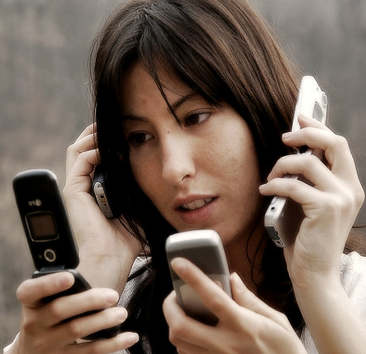
Whatever. We take life as we find it, and in most cases these days that means heavy smartphone usage is the norm off the grid. And that means battery maintenance is crucial to our daily peace of mind. And this info is useful not just to off-grid types but to anyone whose life is mobile but who needs to stay in touch via multiple media whilst they are on the road.
Cell phones and tablets have become incredibly powerful over the past few years, but the batteries, sadly, have not kept up. But there are a few ways to keep phones alive long past their normal exhaustion points.
The most obvious tip is the simplest: having a spare battery to see you through till the next time you get to a charging point. Battery technology is advancing slowly, so we’re going to be struggling with phones running low for the foreseeable future. If you can’t keep your hands off your phone, a secondary battery may be the right solution.
Backup batteries come in many different sizes, but they’re all measured in milliamp hours, or mAh. Your phone or tablet’s battery is measured in mAh, too—pull it out and take a look. You can expect a backup battery to boost your device’s life by as much as you’d expect from the mAh stored, minus about 20 percent for inefficiencies. So if you have a 1500 mAh battery in your phone, a 4000 mAh backup battery should give you more than two full charges.
You have to balance size, convenience, and charging time. Charging cases like the Mophie Juice Pack Air Case and Rechargeable Battery (for Verizon and AT&T iPhone 4) ($79.95) fit just one model of phone and can pretty much double its battery life. Small batteries like the Powermat Power! Dual 1850 Rechargeable Backup Battery
( $37.99) are light, portable and flexible, and also hold at least one charge for most smartphones. Bigger batteries take longer to charge, and they usually require you to tote around a USB cable, but they’re a lot more of a workhorse than the little guys. The Sanyo eneloop mobile booster charges ipad, iPhone 4 and Blackberry. Comes with 2 USB output)
(£49.99 in the UK) delivers a whopping 5,000 mAh in something not much bigger than a deck of cards—that’s almost three times the capacity of the Power! 1850.
Amongst the biggest battery you can buy, the ZaggSparq 2.0 ($99), holds 6,000 mAh, powering an iPad for more than 7 hours of movie playback. On the other hand, you have to recharge your ZaggSparq for nine hours when it runs down. Energizer tries to play the entire field with backup batteries ranging from 650 to 18,000 mAh;
The company’s 4,000 mAh model, Energizer XP4001 Universal Rechargeable Power Pack
($49.99), is a happy medium.
Not all generic portable batteries are compatible with all devices, though.Some phones, such as the HTC range, to be a bit picky. The HTC Thunderbolt, for example, has an extended battery custom-designed for it.
Sometimes, keeping your phone charged is just about having a convenient place to charge it. Wireless chargers are a gimmick, but they’re a very psychologically helpful one. The big advantage of the Palm Touchstone Charging Dock
($19.99, ) is that you don’t have to fiddle with cables or think about plugging it in: you just drop your phone on the Touchstone and you’re charging.
TheDuracell Mygrid Starter Kit
($73.32) and the Powermat Home & Office Powercube (PMM-HO100-B3-48CPL)
($50.00, ) try to be a Touchstone for the masses. But they’re a little awkward; since most phones don’t yet come with inductive charging backs, you have to get extra cases or accessories for every phone you want to drop on the pad. The idea is good, especially if you have a lot of devices with a lot of little cords; these pads can charge many things at once. But the charging pads tend to be finicky, and the price gets run up as you buy all of their accessories. There’s a new standard called Qi that several phone manufacturers may start building into their devices, which would make the wireless charging thing much more convenient.
Battery technology is advancing slowly, so we’re going to be struggling with phones running low for the foreseeable future. If you can’t keep your hands off your phone, a secondary battery may be the right solution.